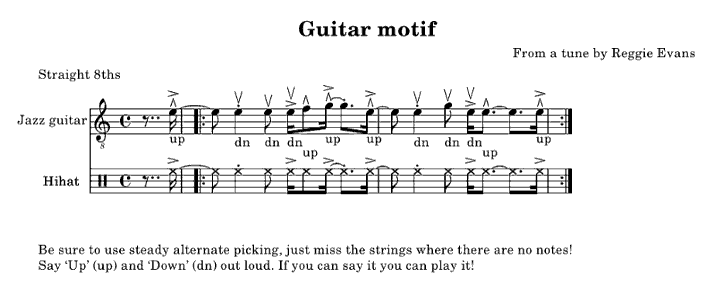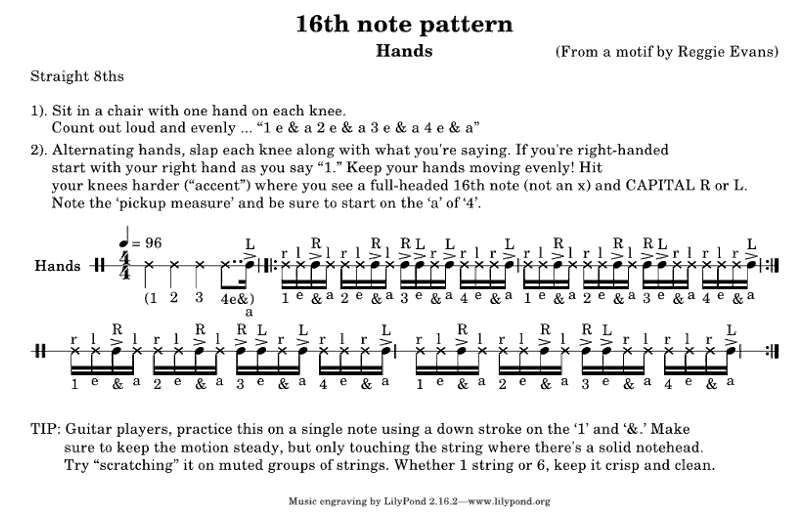 Educators everywhere agree that learning is social, but what does that mean—what does it look like? To a large degree it means we can learn by watching and emulating others who already do the things we wish to learn and have in some way demonstrated mastery. It also means we can learn from others at and around our own level—in fact there’s substantial evidence that we need this element of peer-to-peer engagement. It’s my especially good fortune, and not a day in my life has passed that I haven’t felt grateful, to have been born with at least some degree of musical talent, raised in a household that valued it, located in a time and community that enabled it (middle-class Bethlehem, PA, 1960s). So my learning, especially early on, has largely been situated amongst family and friends who also play and love music. The social aspect always looked a lot like hanging out with good friends figuring out parts we held in high regard, jamming our own music and other people’s—or “busting some licks.”
Educators everywhere agree that learning is social, but what does that mean—what does it look like? To a large degree it means we can learn by watching and emulating others who already do the things we wish to learn and have in some way demonstrated mastery. It also means we can learn from others at and around our own level—in fact there’s substantial evidence that we need this element of peer-to-peer engagement. It’s my especially good fortune, and not a day in my life has passed that I haven’t felt grateful, to have been born with at least some degree of musical talent, raised in a household that valued it, located in a time and community that enabled it (middle-class Bethlehem, PA, 1960s). So my learning, especially early on, has largely been situated amongst family and friends who also play and love music. The social aspect always looked a lot like hanging out with good friends figuring out parts we held in high regard, jamming our own music and other people’s—or “busting some licks.”
[learning music] …always looked a lot like hanging out with good friends figuring out parts, jamming our own music and other people’s …“busting some licks”~moi
In every topic there’s also a vital social element in agreeing upon the criteria that make up what we call a “good,” “better,” or even a “magnificent” performance. When it comes to curriculum-based planning and performance criteria, I’ve again been thankful my main teaching field is music. While the sequencing and relative importance of day-to-day content is widely open to creative license, people generally agree on what sounds “good.” As yet another bonus, to a large degree we can explain what we’re thinking and doing (or not) when it sounds good.
The short video below is a music lesson I learned in the early 80s from my friend Reggie Evans, who was also my room-mate and, as he is to this day, a superb musician and songwriter. His main instrument is the drum kit, and one of the performance criteria by which I choose the word “superb” is his sense of meter. This means you can hear and feel the evenness of his beat, even in the parts (subdivisions) of each beat when he plays, and he doesn’t speed up or slow down the tempo (unless he wants to—in which case listeners remain convinced he’s in control the whole time). Reg wanted me to play a simple three-note motif on a 4-track cassette demo of an idea he had. We both expected it to take 2 or 3 minutes. But then he told me I was playing it wrong. We didn’t have a woodshed but we had a back deck.
The first image below is the funky lick, after which I’ve transcribed how Reg was able to illustrate his thinking about beats, and I was able to transfer that “picture” from drum sticks (or hands) to guitar pick. This lesson was among the most important anyone ever gave me when I was “coming up” as a musician. Why? Because it solved a problem I was having at the time and I’ve been able to apply it, in both teaching and learning, over and over since, in multiple contexts.

“Melody” works best with Firefox. MIDI requires plugin
Sometimes among aspiring musicians informal social learning—especially any in which the the word “wrong” is said out loud—looks a lot like an argument. When it comes to interpreting a passage of 16th notes, bands have probably split over far less! Fortunately Reg just wanted to hear the part played well, and I just wanted to be the one to play it. That’s called “intrinsic motivation.”
Transcript
[Descriptive] Richard is seated facing the camera you can see his hands, palms down, one on each knee.
[Richard] : Sit in a chair with one hand on each knee and count out loud evenly:
1 e & a 2 e & a 3 e & a 4 e & a
1 e & a 2 e & a 3 e & a 4 e & a
Then will alternate hands and slap each knee along with what we’re saying [demonstrates] if you’re right-handed start with your right hand as you say “one.” Keep your hands moving but only accent (or hit your knee louder) where you see a full headed quarter note not an X. Note the pick up measure, and be sure to start on the “a” of “4.” That means 4 e & *A* … that would be my left hand [Demonstrates again this time saying right or left when accenting the full-headed notes… a pattern emerges]
“Left .. right … right .. right left …left
Left .. right … right .. right left…”
You can translate that to an up-and-down stroke my guitar
[scene changes to close up of guitar, picking hand playing string. Richard plays the written
notes. What was “left” is now “up,” what was “right” is now down.

“Handclap” works best with Firefox. MIDI requires plugin
§
Reference
Bandura, A. (1986). Social foundations of thought and action: A social cognitive theory. Englewood Cliffs, NJ: Prentice-Hall.
Thickening the learning situation
…or, “practising what I preach.” This is the long-overdue first instalment of blog-post metaknowledge. My intention is to develop something analogous to “the making of” chapter on your favourite DVD. It sounds like a project that needs a database and template, but doing it manually will give me great insight on what will go into a database.
The video has been updated since publishing, links and link info added, and some sentences have been edited for clarity.
§
Leave a Reply